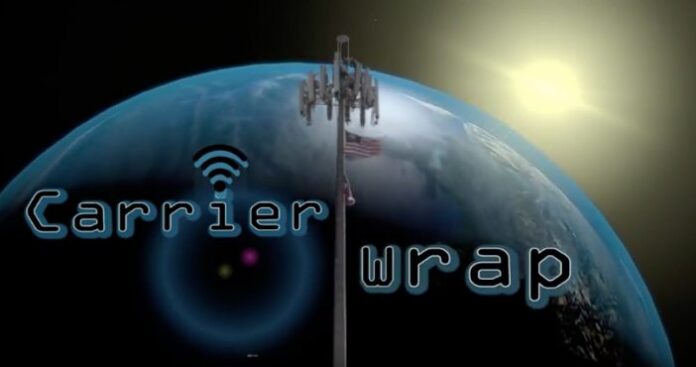Topics for this week’s Carrier Wrap include Sprint results, T-Mobile’s LTE femtocell and the upcoming WRC-15 event
On this week’s Carrier Wrap, we discuss Sprint’s latest quarterly results, dig into T-Mobile US’ recent release of an in-home LTE femtocell and speak with 4G Americas on what to expect from the World Radiocommunication Conference 2015 (WRC-15) event.
Sprint this week released second fiscal quarter financial results that showed some progress by the carrier in terms of turning around operations, but failed to provide enough of a boost or details to satisfy investors and financial analysts. Those results included more than 1 million net connection additions for the quarter, which were boosted by record-low postpaid churn and a successful campaign in migrating prepaid customers to postpaid plans.
However, the growth failed to match that of rivals. T-Mobile US said it added more than 2.3 million connections during the latest quarter, including 843,000 postpaid phone net additions; AT&T Mobility added more than 2.5 million total connections, boosted by robust growth in connected devices; and Verizon Wireless added 1.2 million direct net connections.
Sprint did manage to curtail spending at a faster pace than revenues dropped for the quarter, allowing the carrier to reduce net losses year-over-year to $585 million.
Investors were unimpressed with Sprint’s latest quarter, with the carrier’s stock price dropping more than 6% following the release of its quarterly results.
Perhaps most disappointing to the investment community was the lack of insight into the carrier’s plans to form a device leasing subsidy designed to handle the financial impact of Sprint’s device leasing and equipment installment plans. Sprint and its parent company SoftBank have for months been touting the financial benefits of this program, but details on those benefits remain sparse with Sprint management pushing off formal release of the details for several more weeks.
“As it relates to funding our turnaround, we continue to work with SoftBank and other recognized companies to set up a lease company to monetize device lease by our customers,” explained Sprint CEO Marcelo Claure. “We have agreed upon most of the commercial terms, we’re currently finalizing the documentation and we expect to close our first tranche in the next few weeks.”
Once revealed, Sprint could see a bounce to its stock price, although the details will be heavily scrutinized.
“While these were very positive developments, Sprint investors need much hand holding on the path to free cash flow,” wrote Wells Fargo Securities senior analyst Jennifer Fritzsche in a research note. “Unfortunately, in the absence of any specifics in the announcement regarding the leasing co and partners, that did not come. … There also seemed to be much confusion regarding guidance – Sprint remains a ‘show me’ story in our view – but it is not broken. With better network stats, a significant improvement in churn, a cost cutting plan very much in place, and details on lease co coming in a matter of weeks, there are still catalysts to point to.”
Claure recognized that investors have become leery of Sprint’s continued claims to improve its overall operating position.
“Ultimately, we must find a way to grow and optimize the business at the same time,” Claure said. “I understand that some people will be skeptical, believing that those are two mutually exclusive outcomes. Nevertheless, we’re extremely confident that we can execute on both at the same time with the guiding principle that the changes we make in the operating model must be executed in a way that minimizes any disruption to the sales momentum we’re achieving or the customer experience.”
T-Mobile US LTE femtocell
T-Mobile US this week unveiled its LTE CellSpot femtocell that is designed to boost in-building LTE coverage for customers on the fringe of the carrier’s current network footprint.
T-Mobile US CEO John Legere pitched the new device/service as another point of differentiation between T-Mobile US and its competitors.
“The big difference between us and the carriers is they’ll do absolutely everything they can to bleed you dry,” Legere explained. “We’ll do absolutely everything we can and use every proven technology available to give you the best coverage possible. Where the T-Mobile Wi-Fi CellSpot’s like a T-Mobile tower, this new 4G LTE CellSpot is a T-Mobile mini-tower – and it’s a huge feat of engineering.”
WRC-15 event primer
Also this week, we spoke with 4G Americas President Chris Pearson about World Radiocommunication Conference that recently got underway in Geneva. The event is held every three to four years, and looks at possible revisions or updates to the Radio Regulations treaty governing the use of the radio-frequency spectrum and the geostationary-satellite and non-geostationary-satellite orbits.
Pearson noted this year’s event will look at integration broader spectrum bands in support of mobile broadband services, including so-called millimeter wave bands that are typically above the 24 GHz band. More importantly, this year’s event is expected to set the stage for the WRC-2019 event where spectrum support for “5G” technologies are to be discussed.
Bored? Why not follow me on Twitter

